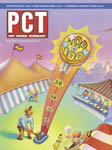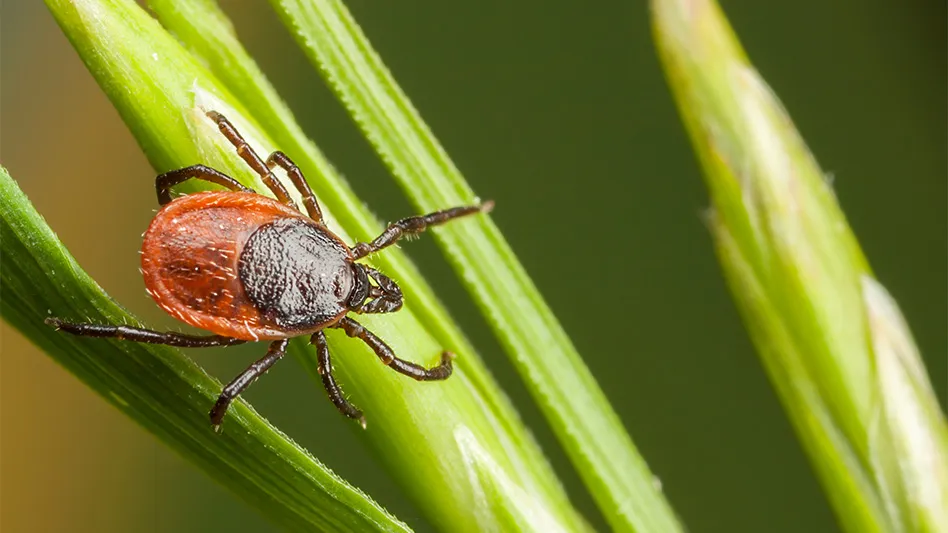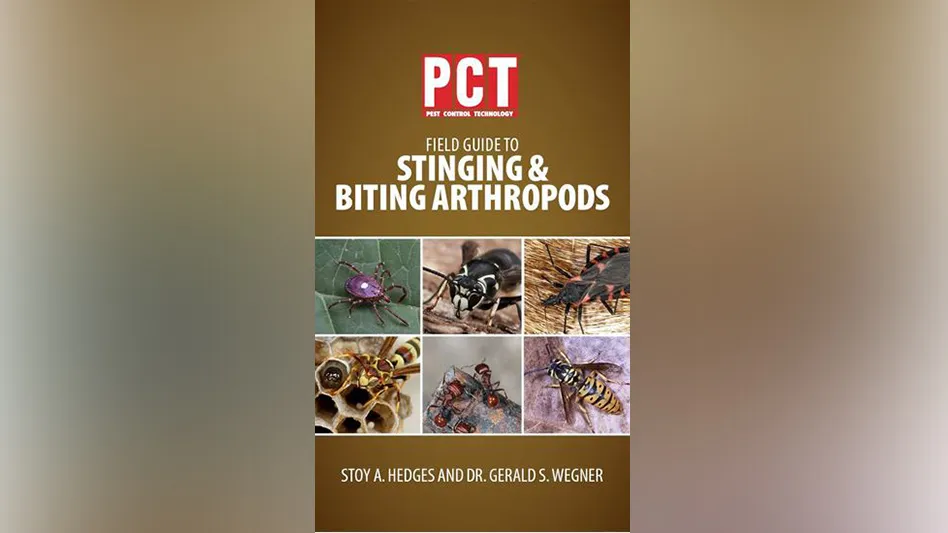Diatomaceous earth (DE) and other inert dusts have been used for thousands of years as insecticides. The Chinese used DE for pest control 4,000 years ago. The American Indians often stored grain with dust to protect it. Soil and clay dust is used by birds taking “dust baths” to free themselves of mites and other parasites. In the United States, DE and inert dusts have been used to control codling moth larvae, flea beetles, bed bugs, cockroaches, termites, ants and other insects. In fact, many pest management professionals have found that diatomaceous earth can be a useful tool in structural pest control (Ebeling 1971).
Inert dusts kill insects by desiccation. They desiccate not by absorbing water, but by removing by abrasion or absorption the outer layer of wax or grease that is part of an insect’s exoskeleton. Due to its highly porous nature, DE is one of the most effective of all natural inert dusts. It absorbs waxy fats and oils (lipids) from the epicuticle (skin) of insects and other invertebrate pests. Once the waxy, oily coating is removed, the insect cannot retain water and dies due to dehydration. Partial water loss makes them thirsty, but most insects die when about 60 percent of their water is lost. Silica gel and fumed silica are synthetic amorphous silicas (SiO2) that also kill insects in this way (Ebeling 1961; Ebeling 1971).
Like silica gel, diatomaceous earth is a form of amorphous silica. It is a natural product composed of billions of fossilized microscopic diatoms. Diatoms are aquatic one-celled creatures that produce most of the food and oxygen found on earth. They also represent the major way that silicates from the earth’s crust are recycled. They extract dissolved silica (SiO2) from rivers and oceans and incorporate it into their porous shells. When the living creature dies, shells sink to the bottom of the ocean, river, or lake and accumulate. Over millions of years, the sediments become diatomaceous earth deposits (Calvert 1930; Quarles 1992).
FRESHWATER OR MARINE DE? Diatomaceous earth can originate in fresh water or salty seas. The physical properties of DE vary with its source. Under a scanning electron microscope, freshwater DE looks like a carpet of hollow porous cylinders that are riddled with holes. It has an uncanny resemblance to some breakfast cereals. Most of the individual diatom shells survive compaction during deposition and the impact of mining, drying, milling and classifying. As a result, freshwater diatomaceous earth products contain a high percentage of intact shells with both an interior void space and interior and exterior surfaces. Freshwater diatomaceous earth is mostly amorphous, containing less than 1 percent crystalline silica (Quarles 1992).
On the other hand, marine diatoms tend to be larger, lacey and fragile. Few survive the compaction of deposition and the impact of mining, drying, milling and classifying. Consequently, natural marine DE contains a high percentage of shell fragments with almost no interior void space. In general, freshwater diatoms are more uniform in shape than marine diatom fragments. Marine DE products have a greater range of size and shape and a larger number of smaller, irregularly shaped particles. Marine DE also has larger amounts of crystalline silica (Subramanyam and Hagstrum 2000).
Either freshwater or marine DE can be calcined, heated to high temperatures. Calcined material should be avoided if it is used as a pesticide. This process makes DE a better filtration material but destroys its desiccant, insecticidal properties. It also increases the crystalline silica content to 25 percent or more; inhalation of significant amounts of crystalline silica over long periods can lead to lung cancer (Quarles and Winn 2006).
BETTER FOR STRUCTURAL PESTS? Freshwater fossils met with early commercial success in pest control and are easy to apply without clumping or caking. Many structural pest control specialists believe that freshwater diatomaceous earth is more effective than marine DE in treatment of pests such as cockroaches (Katz 1991). One hypothesis is that intact freshwater diatoms, with their interior and exterior surfaces, have a greater electrostatic attraction to insects, and are more likely to cling to the insect than are marine diatoms. In fact, laboratory experiments have shown that with the same period of exposure, larger amounts of freshwater DE adhere to insects such as crickets, and mortality rates are higher compared to marine DE (Quarles and Winn 2006).
PHYSICAL PARAMETERS. There are a number of parameters of DE such as particle size, shape, active surface area, oil absorption, pH, density, age and species of diatoms, and chemical composition that could affect insecticidal efficacy. Since the primary insecticidal action of DE is absorption of lipids, the greater the oil absorption, the greater the efficacy. Commercial DE products range from 116 to 175 percent oil absorption capacity.
Ideally, for pest management, it should be a high purity amorphous silica of a uniformly small (less than 10µ) particle size, that contains very little clay and less than 1 percent crystalline silica (Ebeling 1971; Quarles and Winn 2006).
WATER LOSS AND NEEDS. Diatomaceous earth is a successful stored product protectant. Treatment of beans, wheat, corn and other stored products with DE repels stored product pests. Insects foraging in silos must either leave or slowly die from desiccation.
Stored product silos have provided good field laboratories to determine which insects are most susceptible to DE. Most susceptible are hairy insects or those with large surface to volume ratios. Hairy insects pick up larger concentrations of the desiccant; a large surface to volume ratio can mean a higher rate of water loss. Insects with large water needs such as the Argentine ant and the German cockroach are also particularly vulnerable (Quarles and Winn 2006).
COMBINATIONS AND MODIFICATIONS. DE is frequently used as part of conventional pesticide formulations. It is often combined with pyrethrins or pyrethroids as part of a dust or wettable powder formulation. Other modifications include the addition of food attractants to make it less repellent and the addition of molasses to make it stick to insects. To improve its oil absorption characteristics, silica gel is sometimes formulated as part of a DE product.
Diatomaceous earth has been combined with heat for disinfestations of stored products, cereal mills and processing facilities. Heat can make diatomaceous earth more effective; efficacy of DE treatments are significantly enhanced above 86°F. So DE structural treatments might be more effective in warmer climates (Quarles and Winn 2006).
ADVANTAGES OF DE. DE is a natural product that has low toxicity and leaves no chemical residues. This is an attractive feature for customers who are concerned about pesticides. DE is used in toothpaste and paint. Up to 2 percent diatomaceous earth is allowed as an animal food additive and up to 2 percent amorphous fumed silica or silica gel is added as an anti-caking agent to many processed foods. Silica occurs naturally in vegetables and grains; the average human intake from natural sources is about 200 mg per day. Silica is a normal constituent of the human brain and blood plasma (Nutr. Rev. 1982). In 1991, the EPA determined that DE fell in the least-toxic category, “CAUTION,” and exempted DE registrants from many of the expensive and time-consuming health and environmental tests required of more toxic chemicals.
DE is chemically stable and does not dissipate over time. As long as it is dry, its effectiveness does not diminish. As a result, DE is relatively inexpensive compared to other natural insecticides and to synthetic chemical insecticides, which must be repeatedly applied to achieve long-term protection from insects.
Not only is DE a natural product, but insects still have not developed resistance to its dehydrating action. Even today, after tens of millions of years, there are no crawling insects where DE is exposed on the earth’s surface. Insects avoid such deposits because dust in general and DE in particular is repellent to insects. Resistance is also not likely since silica does not directly interfere with metabolic or enzymatic functions. Since only a physical method is involved, genetic resistance is unlikely (Ebeling 1971).
AMORPHOUS VS. CRYSTALLINE. Amorphous silica is sometimes confused with crystalline silica, but the two are quite different. The International Agency for Research on Cancer (IARC) in 1997 concluded that “inhaled crystalline silica in the form of quartz or cristobalite from occupational sources” can be a human carcinogen. The same agency concluded from available evidence that amorphous silica is not a carcinogen.
Though amorphous DE is not a carcinogen, it can irritate eyes and lungs so inhalation exposure should be avoided. Personal protection should include an approved dust mask and goggles. If DE is applied as a Crack & Crevice®* treatment, products containing the lowest amount of crystalline silica should be used. Large-scale application to open areas of living spaces should be avoided.
PART OF AN IPM PLAN. Diatomaceous earth is best when used as part of an IPM plan. Application in cracks and crevices will deny roach harborage and drive thirsty roaches on a quest for water. For instance, thirsty German roaches exposed to DE spend 40 percent of their time at water sources, compared to 0.9 percent for controls (Snetsinger 1988). Roaches driven from harborage are more likely to find cockroach baits and sticky traps that will remove them from a structure.
Ants and other Hymenoptera are very sensitive to the effects of dust. Applications to wall voids and attics can prevent nesting of carpenter ants, Argentine ants and other ant species. Amorphous silica can be applied to confined spaces underneath kitchen cabinets to deny harborage to roaches and to discourage foraging ants. Diatomaceous earth is a useful professional tool that can lead to reductions in conventional pesticide applications and more effective pest control.
Dr. William Quarles is managing editor of the IPM Practitioner, a publication of the Bio-Integral Resource Center. He can be reached at birc@igc.org.
*Crack & Crevice is a registered trademark of Whitmire Micro-Gen Research Laboratories, St. Louis, Mo.
References
- Calvert, R. 1930. Diatomaceous Earth. American Chemical Society Monograph. Reprint 1976. University Microfilms, Ann Arbor, MI. 251 pp.
- Ebeling, W. 1961. Physicochemical mechanisms for the removal of insect wax by means of finely divided powders. Hilgardia 30(18):531-564.
- Ebeling, W. and R.E. Wagner. 1964. Built-in pest control for wall and cabinet voids in houses and buildings under construction. Calif. Agr. 18(11):8-12.
- Ebeling, W. and D.A. Reierson. 1969. Insect proofing during building construction. Calif. Agr. 23(5):4-7.
- Ebeling, W. 1971. Sorptive dusts for pest control. Ann. Rev. Entomol. 16:123-158.
- Katz, H. 1991. Desiccants: dry as dust means insect deaths. Pest Control Technol. April: 82, 84.
Nutr. Rev. 1982. Silicon overdosage in man. Nutrition Reviews 40(7):208-209. - Quarles, W. 1992. Diatomaceous earth for pest control. IPM Practitioner 14(5/6):1-11.
- Quarles, W. and P. Winn. 2006. Diatomaceous earth alternative to stored product fumigants. IPM Practitioner 28(1/2):1-10.
- Snetsinger, R. 1988. Test results for Shellshock™ for EPA registration.
- Dr. Robert Snetsinger, Pennsylvania State University.
- Subramanyam, Bh. and D.W. Hagstrum, eds. 2000. Alternatives to Pesticides in Stored Product IPM. Kluver Academic, Boston. 437 pp.

Explore the May 2007 Issue
Check out more from this issue and find you next story to read.
Latest from Pest Control Technology
- Viking Pest Control Organizes a Charity Bike Build for Local Families
- Gaining Control of Structure-Infesting Carpenter Ants
- Big Blue Bug’s Brian Goldman Receives Rhode Island Small Business Person of the Year Award
- UF Researchers Examine How Much Bait it Takes to Eliminate a Subterranean Termite Colony
- Women in Pest Control Group Continues to Grow, Provide Opportunities in the Industry
- NPMA Announces Results of 2024-2025 Board of Directors Election
- Massey Services Acquires Orange Environmental Services
- Hawx Pest Control Wins Bronze Stevie Award for Sustainability





